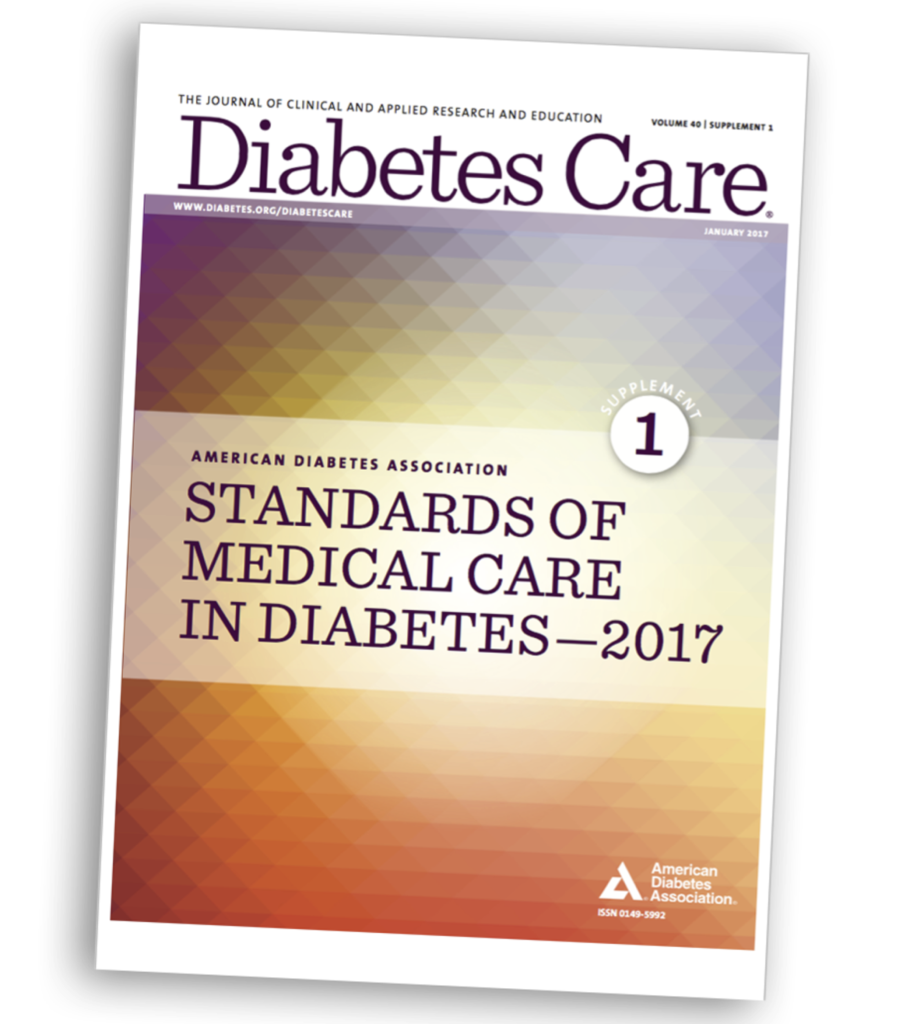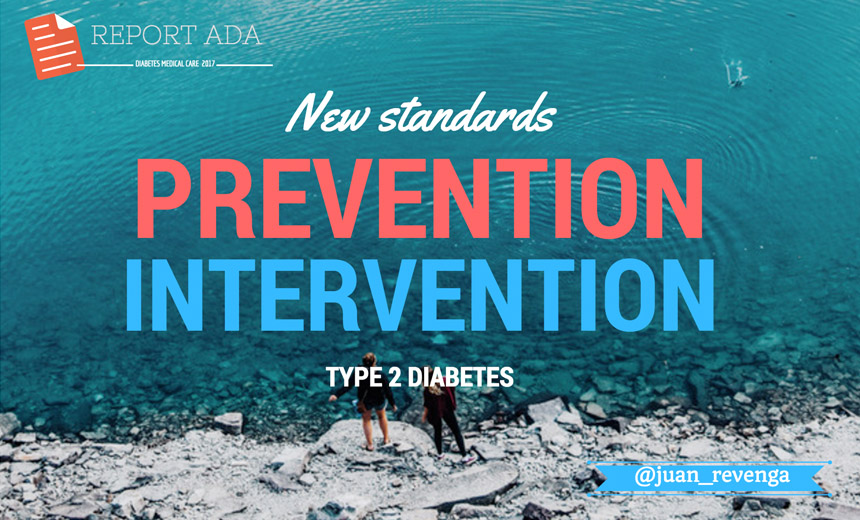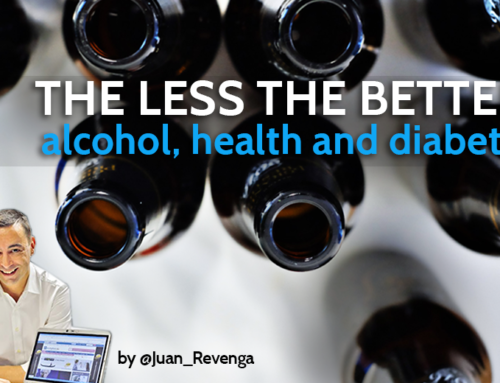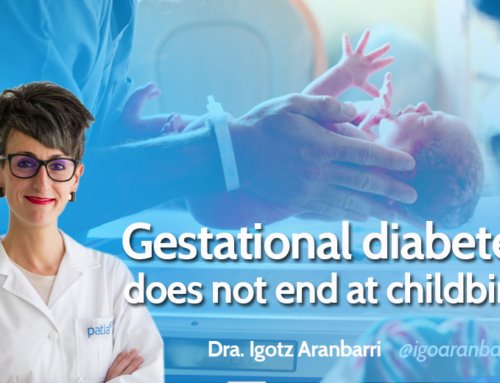New standards in prevention and treatment of diabetes
Stuff goes fast around diabetes. Thus, it is not surprising that each year the American Diabetes Association (ADA) updated its Standards of Medical Care in Diabetes (2017) to provide the best advice based on the most recent evidence.
As usual, the document includes several sections like:

- Promoting health and reducing disparities in populations (page 6)
- Classification and diagnosis of diabetes (page 11)
- Comprehensive medical evaluation and assessment of comorbidities (page 25)
- Lifestyle management (page 33)
- Prevention or delay of type 2 diabetes (page 44)
- Glycemic targets (page 48)
- Obesity management for the treatment of type 2 diabetes (page 57)
- Pharmacologic approaches to glycemic treatment (page 64)
- Cardiovascular disease and risk management (page 75)
- Microvascular complications and foot care (page 88)
- Older adults (page 99)
- Children and adolescents (page 105)
- Management of diabetes in pregnancy (page 114)
- Diabetes care in the hospital (page 120)
This 2017 publication updates several issues compared to previous editions. For expert readers, here we link to ADA itself summary of revisions .
On the other hand, considering the practical and educational content of the publication, we would like to focus in some points related to prevention, lifestyle and nutritional changes related to diabetes. Let´s go.
About prevention
- At least annual monitoring for the development of diabetes in those with prediabetes is suggested (evidence level E)
- Patients with prediabetes should be referred to an intense behavioral lifestyle intervention program modeled on the Diabetes Prevention Program to achieve and maintain 7% loss of initial body weight and increase moderate intensity physical activity (such as a brisk walking) to at least 150min/week (evidence level A)
 Technology-assisted tools including internet-based social networks, distance learning, DVD-based content, and mobile applications may be useful elements of effective lifestyle modification to prevent diabetes (evidence level B)
Technology-assisted tools including internet-based social networks, distance learning, DVD-based content, and mobile applications may be useful elements of effective lifestyle modification to prevent diabetes (evidence level B)- Given the cost-effectiveness of diabetes prevention, such intervention programs should be covered by third-party payers.
About diabetes self-management education and support
- All people with diabetes should participate in diabetes self-management education to facilitate the knowledge, skills, and ability necessary for diabetes self-care and in diabetes self-management support to assist with implementing and sustaining skills and behaviors needed thereafter (evidence level B)
- Effective self-management and improved clinical outcomes (Blood glucose, lipedema, blood pressure…), health status, and quality of life are key goals or diabetes self-management education and support that should be measured and monitored as part of routine care (evidence level C)
- Diabetes self-management education and support should be patient centered, respectful, and responsive to individual patient preferences, needs, and values and should help guide clinical decisions (evidence level A)
- Diabetes self-management educations programs have the necessary elements in their curricula to delay or prevent the development of type 2 diabetes. Diabetes self-management education and support programs should therefore be able to tailor their content when prevention of diabetes is the desired goal (evidence level B)
- Because diabetes self-management education and support can improve outcomes and reduce cost (evidence level B), diabetes self-management education and support should be adequately reimbursed by third-party payers (evidence level E)
About nutrition therapy
ADA insist on saying that there is no a one-sized-fits all eating pattern for individuals with diabetes. To ADA (as well as to myself) regarding nutritional issues the target should be on a healthy patter of nutrition understood as:
 To promote and support healthful eating patterns, emphasizing a variety of nutrient-dense foods in appropriate portion sizes, to improve overall health and specifically to: achieve and maintain body weight goals. Attain individualized glycemic, blood pressure, and lipid goals. Delay or prevent the complications of type 2 diabetes.
To promote and support healthful eating patterns, emphasizing a variety of nutrient-dense foods in appropriate portion sizes, to improve overall health and specifically to: achieve and maintain body weight goals. Attain individualized glycemic, blood pressure, and lipid goals. Delay or prevent the complications of type 2 diabetes.- Demotivate the absurd strategy of quantifying specific nutrients (as seen in the previous post)
- To address individual nutrition needs based on personal and cultural preferences, health literacy and numeracy, access to healthful foods, willingness and ability to make behavioral changes, and barriers to change
- To maintain the pleasure of eating by providing nonjudgmental messages about food choices.
- To provide an individual with diabetes the practical tools for developing healthy eating patterns rather than focusing on individual macronutrients, micronutrients, or single food.
Personal thoughts as an epilogue
Standards of Medical Care in Diabetes 2017 transpires true and concern for people with diabetes. It is obvious. Many of the recommendations that are proposed require a real involvement from the part of the health professionals – and health systems – to train each patient, in the measure of their possibilities, self-management of their illness and their personal situation.
Sincerely, I think that the public health systems that frequent the readers of this blog are quite far from covering these recommendations. Sadly, and as things stand, they will only be available to a select population of people with diabetes (or who want to prevent it). Those who, in the first place, are truly sensitized to all the issues inherent to their situation and, secondly, to those who can meet their cost by going to the relevant health professionals … in the private sector, of course.
Latest posts by Juan Revenga Frauca (see all)
- Obesity recognized as a chronic disease - 13 October, 2021
- Who said you have to eat everything? - 7 October, 2021
- Diabetes and Alzheimer - 29 January, 2021









